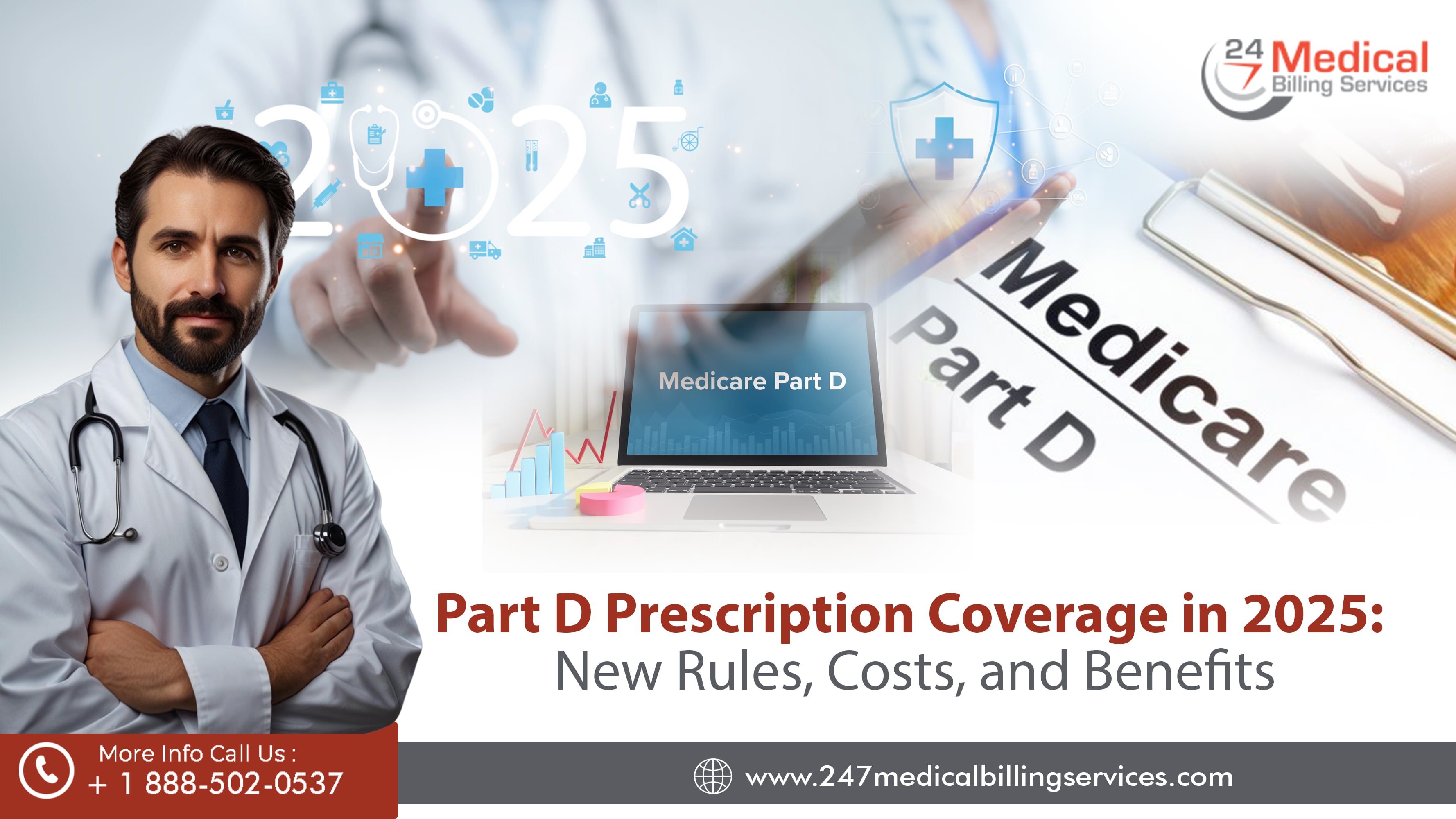
Part D Prescription Coverage in 2025: New Rules, Costs, and Benefits
Medicare Part D program functions as a vital assistance system to make prescription drugs affordable for seniors and disabled population. Many Medicare beneficiaries experience large financial strain due to increasing drug prices. New regulations stemming from the Inflation Reduction Act (IRA) will come into effect during 2025. Part D Medicare beneficiaries will benefit from these rule updates that remove the coverage gap and define yearly spending limits and include payment scheduling features and the Extra Help expansions with the implementation of the Medicare drug negotiation processes. Therefore, beneficiaries who wish to make good decisions about their prescriptions must understand the upcoming updates.
Part D Prescription Coverage New Rules
The Medicare Part D program of 2025 delivers multiple regulatory reforms to safeguard beneficiaries from expensive prescription drugs. The most important changes under Medicare Part D in 2025 consist of:
- Elimination of the Coverage Gap (Donut Hole)
Prior to 2025, Medicare Part D included a gap in coverage referred to as the "donut hole" which imposed increased prescription drug expenditure requirements on patients. Beginning in 2025, the Medicare Part D coverage gap will no longer exist which will simplify medicine payment responsibility and eliminate unexpected increases in medical costs. Beneficiaries will experience a stable transition due to this change as they move between initial coverage and catastrophic coverage phases.
- Annual Cap on Out-of-Pocket Costs
The first annual out-of-pocket spending threshold of $2,000 will be established in Medicare Part D history. Beneficiaries who reached a yearly expenditure of $2,000 for prescription drugs during the year become exempt from further drug coverage payments throughout the balance of that year. The monthly cap delivers costly financial benefits to people who need medications to control ongoing health problems.
- Payment Smoothing Option
The revised plan enables Medicare Part D members to divide their prescription drug costs throughout the year rather than paying big bulk amounts upfront. Beneficiaries can better control their healthcare expenses because this policy lets them distribute costs through manageable monthly payments. The payment smoothing option creates benefits for seniors on fixed incomes since it helps them handle unanticipated medical bills.
- Expansion of the Extra Help Program
The Extra Help program, which assists low-income Medicare beneficiaries by covering Part D premiums, deductibles, and copays, will be expanded in 2025. The income eligibility threshold will increase, allowing more individuals to qualify for this financial assistance. As a result, many beneficiaries who previously received partial benefits will now receive full subsidies, significantly reducing their medication costs.
- Medicare Drug Price Negotiations
The Medicare program will start implementing drug price negotiations for high-cost pharmaceuticals beginning in 2025. Such changes represent a major policy evolution since Medicare's regulations have limited its ability to conduct direct price negotiations with pharmaceutical firms in the past. These negotiations will show their complete effects steadily over time while generating savings for enrolled Medicare beneficiaries through reduced drug prices for selected medicines.
Part D Prescription Coverage Costs
The establishment of a yearly out-of-pocket maximum at $2,000 will deliver significant cost relief to Medicare beneficiaries who before now spent excessively on their medications. The coverage gap elimination ensures that Medicare beneficiaries avoid unexpected surges in their necessary prescription drug expense requirements. The Extra Help program expansion policy will make medication cost subsidies more accessible for broader groups of beneficiaries. Medicare drug price negotiations might reduce healthcare expenses but it is challenging to predict how much savings the program will generate because the affected medications remain unknown. Beneficiaries who use the payment smoothing option will reduce their financial stress through improved expense management capabilities.
Part D Prescription Coverage Benefits
The 2025 Medicare Part D changes bring several advantages. The elimination of the coverage gap simplifies cost-sharing and prevents unexpected financial burdens. Healthcare costs become more predictable through the $2,000 out-of-pocket limit as this amount ensures prescription costs remain manageable for beneficiaries. Through its smooth payment option, the plan provides enhanced budget flexibility which enables senior citizens and disabled persons to better control their financial resources. Medical billing professionals help beneficiaries and healthcare providers navigate these changes. Through program expansion the Extra Help initiative increases healthcare affordability for more low-income Americans thereby improving their access to essential medications. Lastly, Medicare drug price negotiations will contribute to long-term cost reductions, making essential prescriptions more affordable for beneficiaries.
What Next?
In 2025, Medicare beneficiaries need to actively review their Part D plans while checking new available plan options. People who meet the criteria for expanded Extra Help should file their application right now to access supplemental affordable healthcare. Healthcare professionals along with pharmacists need to instruct patients about obtaining maximum benefits along with guiding them through cost-reducing alternatives. Medicare beneficiaries need to follow updates regarding selected medications targeted for negotiations because that information affects prescription drug costs in the future.
Conclusion
The upcoming Medicare Part D reforms in 2025 will establish fundamental advancements in prescription medication affordability within the beneficiary population. These reforms work to alleviate prescription drug costs through the removal of the coverage gap and annual cost limits and expanded assistance programs and required Medicare negotiations on drug prices. Beneficiaries need to maintain awareness about program enhancements so they can execute required steps to claim all available benefits under the revised guidelines.

.png)